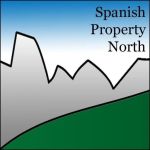In the heart of the eastern part of Asturias, the town of Cangas de Onis is a beautiful destination that is rich in history and natural beauty. From its stunning medieval bridge to its vibrant cultural scene and outdoor recreation opportunities, this charming town has something to offer every traveler.
One of the most iconic landmarks in Cangas de Onis is the Roman Bridge, which dates back to the 1st century AD and is one of the oldest bridges in Spain. The bridge is a testament to the town’s long and storied history, and visitors can take a stroll across it to soak up the views of the surrounding countryside. In addition to the bridge, the town is home to several other historic landmarks, including the 12th-century Church of Santa Maria, which features a stunning Romanesque façade and intricate carvings.
Beyond its historic attractions, Cangas de Onis is also a hub for culture and the arts. The town is home to several museums and cultural centers, including the Museum of the Covadonga Shrine, which explores the history and religious significance of the nearby shrine of Our Lady of Covadonga. Covadonga is known for its stunning natural beauty and incredible architecture, one of the most popular attractions in Covadonga being the Basilica of Santa Maria la Real de Covadonga. This impressive structure was built in the late 19th century and is dedicated to Our Lady of Covadonga, who is regarded as the patron saint of Asturias. The town is also close to the Covadonga Lakes, which are a popular and stunning visitor attraction.
For those who love the great outdoors, Cangas de Onis is a paradise. The town is known as the gateway to the Picos de Europa mountain range, which offers a wealth of opportunities for hiking, mountain biking, and other outdoor activities. From the challenging summit of Pico Urriellu to the gentle slopes of the Ruta del Cares, there are trails and routes to suit every level of fitness and experience.
Cangas de Onis is also famous for its gastronomy. The town is home to a range of traditional Asturian restaurants and cider houses, where visitors can sample the region’s hearty and flavorful cuisine. Some of the local specialties include fabada (a hearty bean stew), cachopo (a breaded and fried meat dish), and of course, sidra (a crisp, refreshing apple cider). The town is also home to several local markets, where visitors can purchase fresh produce, cheeses, and other artisanal products.
Overall, Cangas de Onis is a hidden gem in the heart of Asturias that offers visitors a unique blend of history, culture, and natural beauty. Whether you’re interested in exploring the town’s rich heritage, immersing yourself in its vibrant cultural scene, or simply enjoying the great outdoors, Cangas de Onis is a destination that should not be missed. With its stunning Roman bridge, delicious cuisine, and exciting events, this charming town is a true gem of the Asturias region.
Living close to Cangas de Onis can give you the best of both worlds – a peaceful and beautiful home in amazing countryside but with the convenience of a bustling town nearby. Some of the properties we have available in the vicinity are:
A hidden gem tucked away just above the town…
A luxury villa with swimming pool and private access to the river…
A detached stone-built house in 9000m2 of land with its own forest
You can check out our blog about the neighbouring town of Arriondas here…





